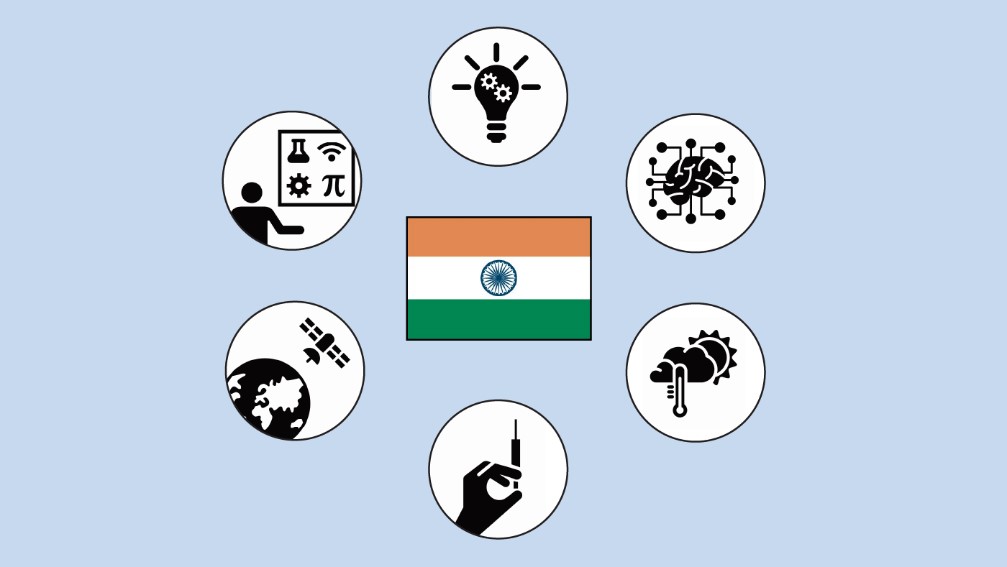India has achieved remarkable development in various fields of science and technology in the last seven-and-a-half decades. Some of the major achievements include the development of indigenous nuclear technology, atomic clock, and designing the world’s smallest satellite. India has also become self-sufficient in the production of food, milk, fruits, vegetables, drugs, and vaccines. India is an IT superpower, has the largest scientific manpower, and the largest railway network in the world.
Indian scientists and mathematicians have made phenomenal contributions to science and technology, with some even receiving awards like the Nobel Prize. India has developed ballistic missiles and has the capability to launch GSLV satellites.
ClearIAS tracks the remarkable progress of India, made in a wide range of disciplines, from space research and missile technology to computing and oceanography, to mark the milestones of the country’s scientific journey.
Some notable achievements include:
- In 1954, Homi J. Bhabha established the Atomic Energy Establishment which was later renamed as Bhabha Atomic Research Centre.
- In 1962, Jawaharlal Nehru established the Indian National Committee for Space Research under the Department of Atomic Energy which was later renamed as Indian Space Research Organisation (ISRO) in 1969.
- In 1963, Vikram Sarabhai established India’s first rocket launch facility at Thumba.
- In 2020, India’s first hydrogen fuel-cell powered car completed its trials. The technology uses chemical reactions between hydrogen and oxygen (from air) to generate electrical energy, eliminating the use of fossil fuels.
The experiment in science and technology that independent India has embarked on began with our leaders’ goal of bringing about social change through public investment in this field. The year was 1954 when Homi J. Bhabha established the Atomic Energy Establishment. After his death, it was renamed as Bhabha Atomic Research Centre. A presidential order later established the Department of Atomic Energy.
In 1958, India introduced its first science policy that placed a strong emphasis on fundamental research in almost every field of science. The policy also emphasized the development and availability of basic infrastructure for the advancement of scientific research.
In 1965, TIFR mathematicians M.S. Narasimhan and C.S. Seshadri created the Narasimhan-Seshadri Theorem which is considered as one of the most significant mathematical discoveries to come out of India since independence.
These are just a few examples of India’s achievements in science and technology. There are many more achievements that showcase India’s progress in this field.
In conclusion, India has a rich history of contributions to science and technology. From ancient times to the present day, Indian scientists and mathematicians have made significant contributions in fields such as mathematics, medicine, chemistry, physics, astronomy, and many others. These achievements have helped shape the world we live in today and have laid the foundation for future advancements in science and technology. India continues to be a leader in these fields, with ongoing research and development that promises to bring even more groundbreaking discoveries and innovations.
